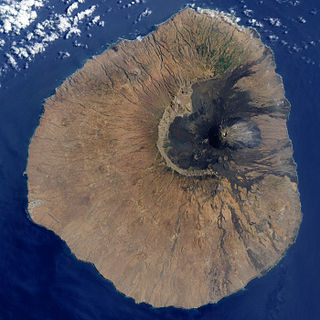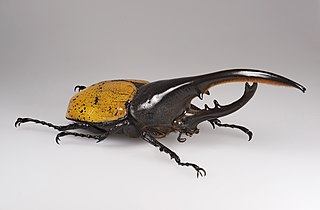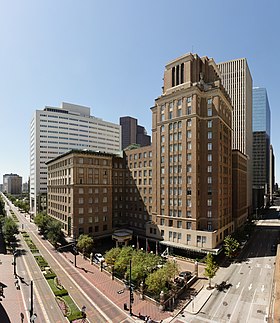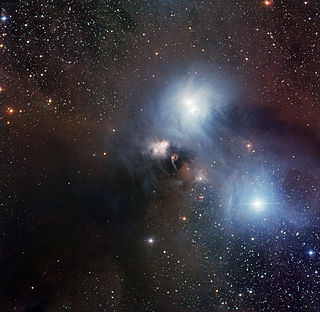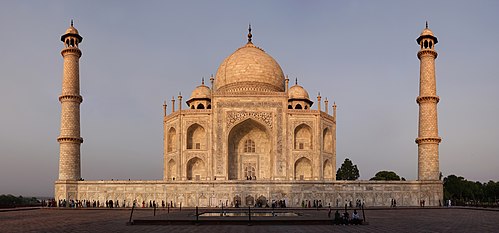
|
This is the Photo Album of POTDs of this month |
Archives
Photo Album
| JANUARY 2014 | |
| 01 |
The
Plumbeous Water Redstart (Rhyacornis fuliginosa, male pictured) is a species of bird in the family
Muscicapidae which is found in South Asia, Southeast Asia and China. The bird's common name refers to its colour, resembling lead. The bird tends to be found near running water, often at higher altitudes, though it will go to lower altitudes during the winter.Photo:
JJ Harrison
|
| 02 |
The larva of
Cydalima perspectalis, a species of moth native to eastern Asia but also found in Europe. Larvae, such as this specimen photographed in
Dornbirn, Germany, feed on the leaves and shoots of
Buxus species.Photo:
Böhringer Friedrich
|
| 03 |
The
Chesme Church is a small
Russian Orthodox
church in
Saint Petersburg, Russia. Built by the Russian court architect
Yury Felten in 1780, at the direction of
Catherine the Great,
Empress of Russia, it was erected to commemorate the anniversary of Russia's 1770
victory over
Turkish forces in Chesme Bay during the
Russo-Turkish War of 1768–1774.Photo:
A.Savin
|
| 04 |
The Ardabil Carpet in the
Victoria and Albert Museum, London, England, is a
Persian carpet completed during the reign of
Tahmasp I (mid 16th-century). Acquired by the museum in the 1890s, the carpet, which has 26 million knots, was "in tatters" and was restored by sacrificing a similar rug.Carpet: Maqsud of Kashan; photograph: Victoria & Albert Museum
|
| 05 |
The
SNCB Class 77 is a class of 4-axle B'B'
diesel-hydraulic locomotive designed for shunting and freight work. It was manufactured at the beginning of the 2000s by
Siemens Schienenfahrzeugtechnik, and later by
Vossloh at the
Maschinenbau Kiel plant in
Kiel, Germany, for the
National Railway Company of Belgium (SNCB/NMBS).Photograph:
Marc Ryckaert
|
| 06 |
A satellite image showing
Fogo, one of the islands making up
Cape Verde. The
Pico do Fogo volcano, which forms the whole island, is a tourist attraction and the tallest peak in the archipelago.Photo:
NASA Earth Observatory/Jesse Allen
|
| 07 |
Many humans consume various types of
eggs as part of their diet. Two edible parts of a chicken egg (the type most often consumed) are shown here: the
white and the
yolk. The white is a clear liquid surrounding the yolk, consisting of 90% water and 10% dissolved proteins. The yolk, a firm yellow sphere, contains all of the egg's fat and cholesterol and about one-half of the protein. Not shown in the illustration is the egg's outer shell which is not normally consumed.Photo:
Biswarup Ganguly
|
| 08 |
Tony Estanguet (b. 1978) is a French slalom canoeist who has competed since the mid-1990s. Before announcing his retirement, he competed in four
Olympic Games and, with his win at the
2012 London Games, became the first French Olympian to win three gold medals in the same Olympic discipline.Photo:
Pavel.rycl
|
| 09 |
LH 95 is a modestly sized
stellar nursery in the
Large Magellanic Cloud orbiting the
Milky Way.Photo:
NASA/
ESA
|
| 10 |
The
Eastern Phoebe (Sayornis phoebe) is a small, migratory
passerine bird found in Central and North America. It breeds in woodlands in the eastern United States and often nests on human structures. This specimen was photographed in
Madison, Wisconsin, US.Photo: John Benson
|
| 11 |
A Series 1882 $1,000
Gold Certificate, depicting
Alexander Hamilton. Born January 11, 1755 (or 1757) in
Charlestown,
Nevis, and the only non-native member of the
Founding Fathers of the United States, Hamilton served as the first
United States Secretary of the Treasury.Banknote:
Bureau of Engraving and Printing (image courtesy of the
Smithsonian Institution)
|
| 12 |
Annkathrin Kammeyer (born 1990) is a German
Social Democratic politician. She became a
Member of the Hamburg Parliament on 7 March 2011, the youngest person ever elected to that body.Photograph:
Christoph Braun
|
| 13 |
The
Hercules beetle (Dynastes hercules) is the largest of the
rhinoceros beetles. Able to lift almost 850 times their own weight, these South and Central American beetles can measure 17 cm (6.75 inches) in length.Photograph:
Didier Descouens
|
| 14 |
The
Humble Oil Building in
Houston, Texas, was completed by the
Humble Oil and Refining Company in 1921. A tower, visible to the right, was added fifteen years later. Humble Oil used this building as their headquarters until 1963. Listed on the
National Register of Historic Places in 1999, the building now houses a
Courtyard by Marriott hotel, as well as apartments and retail space.Photograph:
Jujutacular
|
| 15 |
The
Australian Shelduck (Tadorna tadornoides) is a
shelduck native to Australia and Tasmania. Females can be differentiated from males by white feathers around the eye.Photograph:
JJ Harrison
|
| 16 |
Three scenes of the legend of the Miraculous Sacrament in stained glass windows in the
Cathédrale Saints-Michel-et-Gudule of Brussels by
Jean-Baptiste Capronnier (c. 1870). The contributions of Capronnier (1814–1891) helped lead to a revival in glass painting.Windows:
Jean-Baptiste Capronnier; photograph:
Joaquim Alves Gaspar
|
| 17 |
The
Chota Imambara in
Lucknow, Uttar Pradesh, India, is a mausoleum constructed by and for
Muhammad Ali Shah, the third
Nawab of
Awadh, beginning in 1838.Photograph:
Muhammad Mahdi Karim
|
| 18 |
The home of
Barbra Streisand, an American singer and actress, in
Malibu, California. In 2003 her attempts to suppress this photograph, taken for the
California Coastal Records Project, led to the
unintended consequence of publicizing the photograph much more widely; before Streisand filed her lawsuit, the image had been downloaded only six times (twice by Streisand's lawyers), whereas in the month after the lawsuit afterwards more than 420,000 people visited the site. The term "
Streisand effect" evolved from the controversy and has been used to describe subsequent cases of the phenomenon.Photograph: Kenneth and Gabrielle Adelman
|
| 19 |
St. Francis in Ecstasy is a painting by the Italian Renaissance master
Giovanni Bellini, started in 1475 and completed around 1480. The 124 cm × 142 cm (49 in × 56 in)
oil on panel painting depicts
Francis of Assisi in ecstasy, although academics disagree upon the reason. The painting is now housed in the
Frick Collection in New York City.Painting:
Giovanni Bellini
|
| 20 |
The leaders of the
women's road race, one of the cycling events at the
2012 Olympic Games in London, on 29 July 2012. The eventual medallists (left to right:
Lizzie Armitstead (silver),
Marianne Vos (gold) and
Olga Zabelinskaya (bronze)) were photographed approximately 10 kilometres (6.2 mi) from the finish line.Photograph:
David Iliff
|
| 21 |
The
R Coronae Australis region, imaged with the Wide Field Imager at the
European Southern Observatory's
La Silla Observatory. R Coronae Australis is a star located in the
Corona Australis constellation. According to ESO, "the light blue nebulosity seen in this picture is mostly due to the reflection of starlight off small dust particles."Photograph:
ESO
|
| 22 |
The
BMW Headquarters is a landmark in
Munich,
Germany. The site has served as world headquarters for
BMW since 1973. Designed by
Karl Schwanzer, the tower's exterior is supposed to mimic the shape of a cylinder in a
car engine, with the circular
museum representing the
cylinder head.Photograph:
Diego Delso
|
| 23 |
The
Yellow-spotted Honeyeater (Meliphaga notata) is a species of bird in the family
Meliphagidae. Yellow-spotted Honeyeaters are aggressive birds and have a loud, metallic call; some have described as akin to a
machine gun.Photo:
JJ Harrison
|
| 24 |
Catopsilia pyranthe is a medium sized butterfly of the family
Pieridae. It is found in South Asia, Southeast Asia and parts of Australia. This male was photographed in
West Bengal, India.Photo:
Joydeep
|
| 25 |
Western view of the
Taj Mahal, viewed during the
golden hour. Symbolically, the constantly changing sunlight reflected by the
mausoleum's
marble has a metaphoric role which associates light with the presence of
God. Located in
Agra,
Uttar Pradesh, the Taj Mahal was constructed in the 17th century by
Shah Jahan and has been called the finest example of
Mughal architecture. In 1983 it was designated a UNESCO
World Heritage Site.Photo:
Muhammad Mahdi Karim
|
| 26 |
The chamber of the
Australian House of Representatives, one of the two houses of the
Parliament of Australia. It is referred to as the
lower house, with the
Senate being the
upper house; the consent of both houses is needed to pass legislation.Photograph:
JJ Harrison
|
| 27 |
Diagram of the deep sea limpet
Bathyacmaea secunda, which inhabits the thermal vents of the
Okinawa Trough and others around Japan. The actual animal is largely colorless, 6 millimetres (0.24 in) long, and completely blind. Organs with names in parentheses are located behind other organs.Diagram:
K.D. Schroeder
|
| 28 |
Harhoog is an extended
dolmen, a rectangular
megalithic tomb from the
Funnelbeaker culture, located near
Keitum on the island of
Sylt in
Schleswig-Holstein, Germany. Discovered near the mud flats between Keitum and Tinnum in 1925, the tomb was moved to the present site in 1954 when a new airport was developed.Photograph:
Michael Gäbler
|
| 29 |
Calliptamus italicus is a species of
grasshopper native to Europe and Asia. This
polyphagous species can feed on various wild plants, but also on crops, especially legumes.Photograph:
Kulac
|
| 30 |
The
Dusky Myzomela (Myzomela obscura) is a species of bird in the
honeyeater family which lives in various habitats in Oceania and the Malay archipelago. Feeding on insects and nectar, these birds may be sedentary or migrant, depending on the habitat in which they live.Photograph:
JJ Harrison
|
| 31 |
A
Yeoman Warder in Tudor State Dress, photographed about 1890–1900, (coloured later). The Yeomen Warders, formed by
Henry VII in 1485, are tasked with guarding the
Tower of London and the
crown jewels contained within. Today's Yeomen Warders must be retired
non-commissioned officers from the armed forces of the
Commonwealth realms who have at least 22 years of service.
Photochrom: Detroit Publishing Company; restoration:
Adam Cuerden
|






